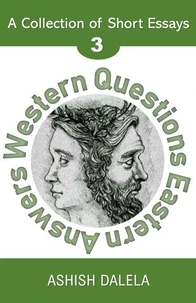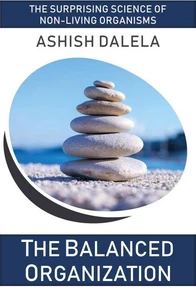The Journey of Perfection: A Scientific Commentary on Yoga Sūtras. Six Systems of Vedic Philosophy, #4
Par :Formats :
Disponible dans votre compte client Decitre ou Furet du Nord dès validation de votre commande. Le format ePub est :
- Compatible avec une lecture sur My Vivlio (smartphone, tablette, ordinateur)
- Compatible avec une lecture sur liseuses Vivlio
- Pour les liseuses autres que Vivlio, vous devez utiliser le logiciel Adobe Digital Edition. Non compatible avec la lecture sur les liseuses Kindle, Remarkable et Sony
 , qui est-ce ?
, qui est-ce ?Notre partenaire de plateforme de lecture numérique où vous retrouverez l'ensemble de vos ebooks gratuitement
Pour en savoir plus sur nos ebooks, consultez notre aide en ligne ici
- FormatePub
- ISBN978-93-85384-38-7
- EAN9789385384387
- Date de parution13/08/2021
- Protection num.pas de protection
- Infos supplémentairesepub
- ÉditeurShabda Press
Résumé
Yoga is one of the Six Systems of Vedic philosophy, and Yoga Sutra is the oldest and most authoritative text on this philosophy. This book translates and comments on this ancient text. The text begins by describing how conscious experience begins in the Chitta, which is the repository of our past experiences, accumulated over many lifetimes. From this historical record of past experiences, thoughts and desires are produced automatically, which the soul falsely considers as its creations, and thus becomes a slave to its past.
The purpose of Yoga is to destroy this historical record and liberate the soul from the bondage of its past. To achieve this goal, the Yoga Sutra presents an eight-step process comprising Yama, Niyama, Asana, Prañayama, Pratyahara, Dharana, Dhyana, and Samadhi. The steps of meditation called Dharana and Dhyana are stated to be the surrender to the form of the Lord called Paramatma in the heart. This surrender-called isvara pranidhana-is the perfection of Yoga.
All previous steps are presented as the means to help the practitioner of Yoga meditate unflinchingly. The text presents eight-fold mystical perfections called Siddhis, gained by a Yogi who has mastered the control of Praña. This book discusses the details of these mystical perfections and how they rest upon an alternative understanding of matter. They enable a Yogi to become light or heavy, small or big, walk on fire, water, or air, travel to distant places in a moment, or change his or her body instantly.
The purpose of Yoga is to destroy this historical record and liberate the soul from the bondage of its past. To achieve this goal, the Yoga Sutra presents an eight-step process comprising Yama, Niyama, Asana, Prañayama, Pratyahara, Dharana, Dhyana, and Samadhi. The steps of meditation called Dharana and Dhyana are stated to be the surrender to the form of the Lord called Paramatma in the heart. This surrender-called isvara pranidhana-is the perfection of Yoga.
All previous steps are presented as the means to help the practitioner of Yoga meditate unflinchingly. The text presents eight-fold mystical perfections called Siddhis, gained by a Yogi who has mastered the control of Praña. This book discusses the details of these mystical perfections and how they rest upon an alternative understanding of matter. They enable a Yogi to become light or heavy, small or big, walk on fire, water, or air, travel to distant places in a moment, or change his or her body instantly.
Yoga is one of the Six Systems of Vedic philosophy, and Yoga Sutra is the oldest and most authoritative text on this philosophy. This book translates and comments on this ancient text. The text begins by describing how conscious experience begins in the Chitta, which is the repository of our past experiences, accumulated over many lifetimes. From this historical record of past experiences, thoughts and desires are produced automatically, which the soul falsely considers as its creations, and thus becomes a slave to its past.
The purpose of Yoga is to destroy this historical record and liberate the soul from the bondage of its past. To achieve this goal, the Yoga Sutra presents an eight-step process comprising Yama, Niyama, Asana, Prañayama, Pratyahara, Dharana, Dhyana, and Samadhi. The steps of meditation called Dharana and Dhyana are stated to be the surrender to the form of the Lord called Paramatma in the heart. This surrender-called isvara pranidhana-is the perfection of Yoga.
All previous steps are presented as the means to help the practitioner of Yoga meditate unflinchingly. The text presents eight-fold mystical perfections called Siddhis, gained by a Yogi who has mastered the control of Praña. This book discusses the details of these mystical perfections and how they rest upon an alternative understanding of matter. They enable a Yogi to become light or heavy, small or big, walk on fire, water, or air, travel to distant places in a moment, or change his or her body instantly.
The purpose of Yoga is to destroy this historical record and liberate the soul from the bondage of its past. To achieve this goal, the Yoga Sutra presents an eight-step process comprising Yama, Niyama, Asana, Prañayama, Pratyahara, Dharana, Dhyana, and Samadhi. The steps of meditation called Dharana and Dhyana are stated to be the surrender to the form of the Lord called Paramatma in the heart. This surrender-called isvara pranidhana-is the perfection of Yoga.
All previous steps are presented as the means to help the practitioner of Yoga meditate unflinchingly. The text presents eight-fold mystical perfections called Siddhis, gained by a Yogi who has mastered the control of Praña. This book discusses the details of these mystical perfections and how they rest upon an alternative understanding of matter. They enable a Yogi to become light or heavy, small or big, walk on fire, water, or air, travel to distant places in a moment, or change his or her body instantly.






















